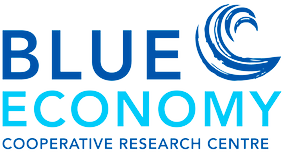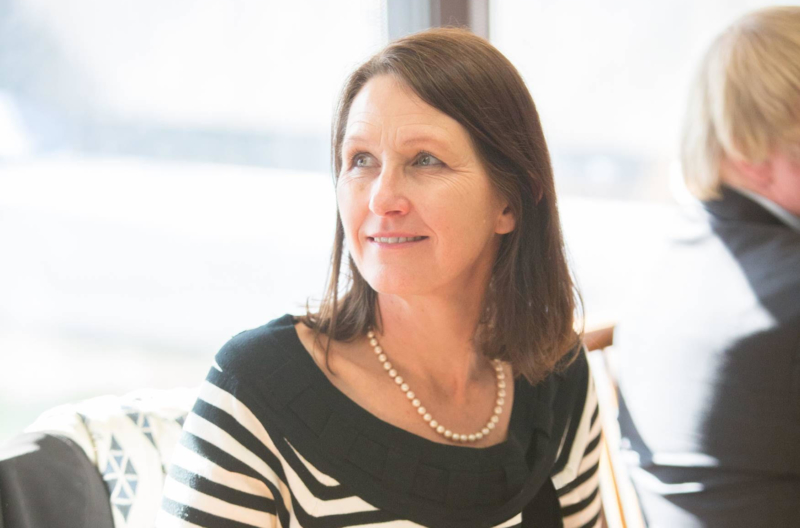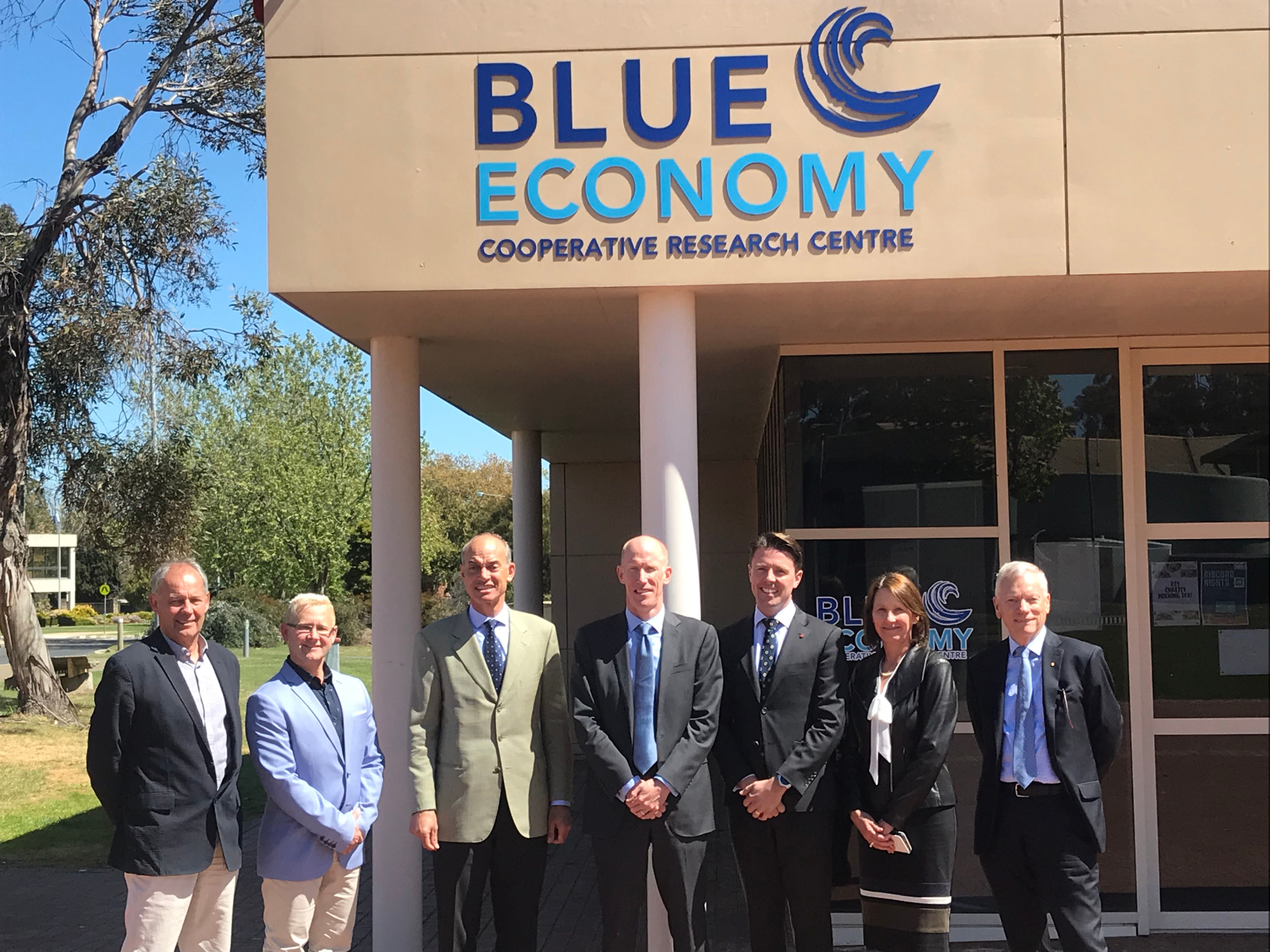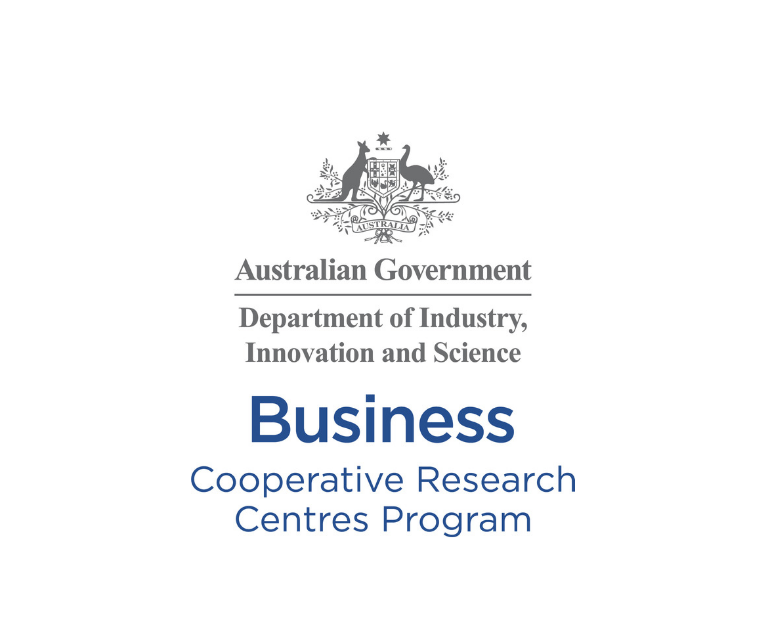Research Programs
Moving seafood and energy production offshore into new and energetic operating environments requires production systems that can withstand both regular and extreme weather events, while being safely and economically managed. Based on stakeholder feedback during the EOI development process, the Blue Economy CRC’s research program has now been reshaped into five distinct streams of applied investigation, described as follows:
Program 1 – Offshore Engineering and Technology
Lead: Professor Chien Ming Wang, University of Queensland

Focusing on the needs of aquaculture and marine renewable energy, this program will deliver innovative engineered solutions that facilitate offshore development in the blue economy. This program will develop, test and commercialise innovative designs for next generation offshore platforms and their associated subsea infrastructure that support the integration of seafood production and offshore renewable energy generation systems.
The specific needs of the aquaculture industry will be met with coherent engineered solutions. This will include, for example, developing and testing individual cage and mooring designs, floating breakwater-windbreak structures and moorings, feed distribution, at-sea harvesting systems, and freshwater storage and production. Offshore designs will need to account for the effects of the environment on the health of the animals, the longevity of the infrastructure and the welfare and safety of personnel working in this environment, to deliver superior performance in terms of design integrity and maintenance. Similarly, working with Program 3, renewable energy devices will require engineered solutions that enable them to work efficiently and effectively in offshore conditions, while being monitored and maintained for optimal use. A comprehensive site assessment study, which meets or exceeds international standards, will ensure these offshore structures and devices are optimally designed to the operating environment and, importantly, are indeed operating in a strategically selected location that balances the needs of both aquaculture, marine renewable energy and offshore structures and technologies. Design of unique, microgrid architectures capable of integrating asynchronous supply to power offshore operations and that can ‘time shift’ excess supply for storage and export (e.g. hydrogen or ammonia production) requires a comprehensive approach to civil, structural, mechanical, chemical, environmental and electrical engineering considerations.
This program also focuses on the use of technology that is rapidly changing the way systems are managed, products are delivered and services provided. Outputs will include the development of systems for remote operations, including monitoring and maintenance. These will include next generation biofouling control strategies and development of biofouling resistant composite materials, (waste) water treatment and nutrient recovery and on-site reuse. In particular, the use of autonomous vehicles and robotics, drones, artificial intelligence, integrated sensor systems and real-time visualisation to deliver cost efficient systems for seafood and energy production will feature. Environmental engineering and monitoring techniques will also be developed, with a view to pioneering novel surveillance and predictive technologies, to proactively manage impacts to the marine and benthic environments using artificial intelligence techniques.
A benefit for large scale offshore farms that can be matched with the ability to harness and convert energy at competitive prices means that mechanical or electrical desalination can also be explored, along with floating storage reservoirs to ensure freshwater availability. Somewhat counter-intuitively, the use of freshwater in large scale aquaculture facilities (especially in relation to salmonids) is critical in the management of parasites and disease and the integration of offshore desalination potentially offers enormous cost savings when compared with the prospect of purchasing and operating loaded well boats to/from the shore – an example of a co-location benefit and supply chain innovation to be rigorously investigated, designed and modelled during the course of the CRC program.
Program 2 – Seafood and Marine Products
Lead: Professor Chris Carter, Institute for Marine and Antarctic Studies, University of Tasmania

The foci of this research program will be to support existing industries to move offshore and to develop, test and evaluate innovative aquaculture production and processing systems for a range of commercial seafood species.
Culturing animals and plants in the offshore environment will require new knowledge in husbandry that includes understanding the impacts on health, disease and nutrition. Solutions will be developed that include engineering options for minimising the energetics of offshore conditions and matching different configurations of offshore production technologies to the energetics of the environment. For example, species that are exposed to strong coastal wave energetic environments will require different growing conditions to those that are found in less energetic environments. In concert with matching species to their environments, this program will also explore systems that deliver ecosystem services through co-culturing (e.g. bivalves and seaweed, with salmon) so that the environmental footprint and impact of farm effluent can be minimised. Likewise, Australia is recognised as a producer of high quality reef-based species and products. Development of artificial floating reef systems that bring the nutrient recycling and productivity advantages of reef systems with the emerging lobster, abalone, urchin and seaweed culture developments will be explored. Such development will be tailored to markets that pay premium prices similar to organically grown terrestrial products.
This program will also focus on trends in consumer demand and supply chains to ensure that there is the diversification of products – both in species and product types from individual species. The latter includes recent developments in the business to consumer markets that deliver premium products ready for immediate consumer use (e.g. specific single serve portions of even thickness).
Offshore seafood production offers the opportunity to create a unique brand around provenance aligned to the quality of premium products drawn from the world’s cleanest oceans. Ensuring animal health and ethics from culture to harvesting and distribution (for live products) are a key component for branding offshore Australasian seafood as a premium product, as is the use of renewable “green” energy and the development of ecologically sustainable products. Research into seafood provenance auditing and ecolabelling that can link the consumer directly to the product and its supply chain will be fundamental to all product development.
Notably, each additional step in demonstrating quality, provenance, environmental impact reduction and social acceptance typically comes at a cost. To determine the viability of different culture systems, including the cost-benefits and market advantages, a sub-program focused on economic viability will work with this Program to determine the degree to which commercially acceptable trade-offs relating to density, product diversification and other such variables provide competitive and financial advantage. This sub-program will also provide the pathways for commercialisation of those systems that meet internationally recognised criteria for economic viability, environmental sustainability and social acceptability.
Program 3 – Marine Renewable Energy
Lead: A/Professor Irene Penesis, Australian Maritime College, University of Tasmania

Key research in this program will be based around, first, expanding our understanding of the technical, commercial and environmental risks and benefits of offshore renewable energy developments and, second, applying this new knowledge to deliver reliable and competitive energy from the ocean. This will take a ‘whole of supply chain’ orientation, beginning with design, testing, deployment, optimisation and integration of novel energy capture devices. A central aspect will be an iterative and targeted optimisation and demonstration program that will drive down the Levelised Cost of Energy (LCOE) for marine renewables to ensure long term competitiveness. This process will be carried out such that devices are developed according to best practice staged-development methodologies to mitigate risk, cost and time to commercial readiness. This may involve testing novel materials and coatings to minimise biofouling, and look at ways to reduce deployment costs through effective mooring techniques that enable deep water installations.
Wave and tidal energy site resource assessments will be conducted at prospective sites to acquire oceanographic and geotechnical characteristics, necessary for optimising devices and moorings, and ensure safe and productive offshore aquaculture operations. Such information will be acquired through various stationary, locomotive and autonomous data acquisition platforms.
Research will look at integrating renewable energy devices into aquaculture and seafood processing operations, such as wave energy converters that can generate electricity while acting as a damper to protect sea cages, pens and artificial reefs. Other uses of renewable electricity and/or hydrogen will include prospects for this to support vertical integration of aquaculture operations offshore (including hatchery/nursery and/or downstream processing operations to reduce handling), as well as provision of lighting, cooling, freshwater (through desalination) and oxygen (via electrolysis) to manage gas exchange. This program will look at ways to integrate a range of asynchronous wind, wave and/or tidal generation devices together in series through microgrid architectures, to observe the integrated characteristics and power quality that they can deliver. A ‘behind the meter’ approach will be taken here to model the supply of electricity to offshore operations.
Quantifying the commercial opportunity of integrated offshore renewable energy systems based on LCOE and capacity factor to deliver competitive returns, at scale, for prospective developers and investors will be crucial. In many ways, this CRC will provide foundation work for the development of the offshore renewable energy sector, not just in Australia, but globally.
Program 4 – Environment and Ecosystems
Lead: Dr Beth Fulton, CSIRO
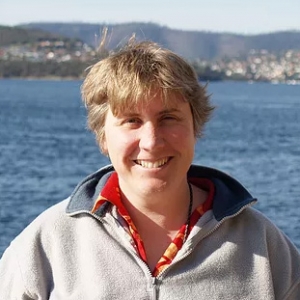
This program focuses on understanding the impacts of food and renewable energy systems developed for offshore marine environments as well as the impacts of the offshore environment on offshore systems. With the prospect of large scale seafood production occurring offshore at orders of magnitude greater than the current level, there is the need for careful planning and investigation to ensure that adverse impacts do not occur. As such, this program will work with programs 1-3 to assist in the design and operation of food and renewable energy systems that minimise environmental impact, cope with the multiple use management requirements of a future blue economy and meet the expectations of sustainable development and healthy ecosystems.
Outcomes from this program will include the development of site specific baseline characterisation and assessment methodologies, including appropriate performance criteria and metrics that will be used to assess impacts of future developments. Research will develop the methodologies for monitoring, including the use of the latest technologies that can provide real-time data (e.g. remote sensing, Artificial Intelligence, drone technologies). In addition to collection of data, the visualisation of data to demonstrate performance and support public engagement is crucial.
Underpinning the monitoring program will be the development of end-to-end ecosystem models that incorporate biogeochemical models, trophic models and human interaction models in a socioecological framework to understand the impacts of offshore systems on the biophysical and socioeconomic systems. These models will also have the ability to forecast impacts such as the expansion of an aquaculture system (e.g. more cages; artificial reefs; increased stocking densities etc.); the impacts of changing environmental conditions (e.g. warmer waters, storm events etc.) and the life cycle assessments for maintenance and replacement.
In developing and evaluating an ecosystem approach to integrated aquaculture and renewable energy systems, this program will also undertake research life cycle modelling to determine the capacity of integrated food and energy production systems to reduce the greenhouse gas intensity of production per unit of output and provide additional ecosystem services. For example, the use of renewable energies, nutrient and materials recycling and the development of carbon capture by kelp forests.
When placing any item in the environment there are biosecurity issues. For offshore aquaculture, biosecurity issues for transmission of disease between cultured and wild stocks is minimised by increasing the physical distance between stocks of native coastal species (e.g. rock lobsters, seaweed etc.). Similarly, impacts from harmful algal blooms and viruses such as pacific oyster mortality are considered to be less likely to occur offshore, although until developments such as this CRC, there is no way to determine this. However, biosecurity remains an important issue and a sub-program of Program 4 will provide an understanding of these risks for both managers and the general public. Biosecurity issues will cover the loss of equipment at sea, the fate of escapees, the transmission of marine pests, diseases and virus between offshore sites and between offshore and coastal sites.
Other environmental impacts associated with offshore structures and renewable energy systems include including marine mammals and seabirds interactions; benthic ecology and subsea geotechnical investigations to determine the impact of mooring systems for various types of offshore infrastructure and understanding the electromagnetic impact of large scale renewable energy generation devices on marine life.
As the CRC will be breaking new ground in the Australian context, the program will need to consider risk identification and mitigation strategies associated with handling of gaseous or liquid hydrogen and ammonia offshore, as well as the application of direct oxygen injection techniques for use in aquaculture systems.
Program 5 – Governance, Policy, Business Development and Communication
Lead: Professor Marcus Haward, University of Tasmania
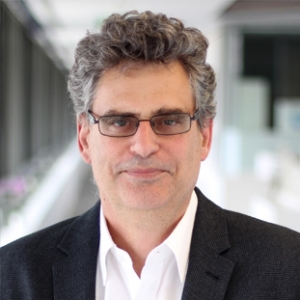
Program 5 will research and develop the options for safe, sustainable and appropriate development of offshore industries and the governance regulatory requirements that will foster future investment and social acceptability to support the growth of new food and energy clusters in the offshore environment. Outputs will include research that underpins development of the regulatory regime for operating offshore in State and Commonwealth waters. This includes Australia’s rights and obligations under a number of international instruments, and the existence of national legislation and regulation in key maritime sectors. An outcome of this program will be the development and implementation of a whole-of-system trans-disciplinary sub-program that integrates across, biosecurity, environmental and socioeconomic domains to deliver tactical and strategic decision-making to address trade-offs and uncertainty.
Regulation of offshore developments will need to account for all activities including the interactions between sectors. This includes impacts on, and between, potential conflicting activities such as transportation (e.g. shipping lanes), marine tourism and commercial and recreational fishing. The development of offshore activities may promote the development of secondary ancillary users such as tourism and recreational activities. This program will also provide the R&D to determine public perceptions regarding offshore development and to develop a public engagement and communication platform to ensure that the community has the best knowledge on which to base their decision-making. The program will work with all interested sectors including non-government environmental groups, local councils and marine recreational users to elicit concerns and develop strategies to minimise conflicts.
A key focus of this research program will be to evaluate appropriate management systems for new and emergent uses, including performance metrics, which meet community expectations and are tangible and measurable. In developing these systems, this program will have strong linkages with Program 4 in the design of appropriate monitoring and evaluation performance metrics for ongoing environmental assessment and health monitoring. Program 5 will also work with programs 2 and 3 to evaluate the benefits of co-location and integration of activities across different users and different sectors. Outputs will include the different regulatory and business frameworks built around integrated activities including the understanding of the interdependencies across sectors and users and their implications in scaling up investments and production systems.
